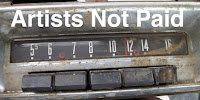 It's been rumored for months, and it's finally happened. SoundCloud has launched a subscription tier to its streaming service called SoundCloud Go and it's priced at what's now become the standard - $9.99 per month ($12.99 for iOS).
It's been rumored for months, and it's finally happened. SoundCloud has launched a subscription tier to its streaming service called SoundCloud Go and it's priced at what's now become the standard - $9.99 per month ($12.99 for iOS).The fact of the matter is that SoundCloud Go seems like it's more to appease the major labels than anything. All 3 majors have now licensed their catalogs to SoundCloud in an effort to get a piece of the DJ remix space they'd been missing.
As for the consumer, there's not all that much of an advantage. The free tier provides 125+ million tracks while the SoundCloud Go offers the same plus an "expanded catalog" (no idea what that means), offline listening, and it's ad free.
One of the big problems for consumers is the lack of big names on the platform, or extensive catalog from major label artists, although the platform seems to be adding more content to Go today. Still, the majority of available songs consists of remixes or user uploaded tracks.
SoundCloud has had a major problem with DJ remixes using unlicensed material, and has had to revoke the subscriptions of many of them as a result, which has led to bad blood in the community and mass defections to MixCloud and Dubset. It's going to be difficult to get them back, if for no other reason than from a logistics standpoint of moving a catalog to a new service.
It appears that SoundCloud Go will pay artists according to their market share, which means that the top 1% will continue to enjoy a higher revenue stream regardless of whether they own the copyright of their material or not.
SoundCloud currently has 175 million active users, so even a conversion rate of 5% would make it a player in the streaming space with nearly 9 million subscribers. SoundCloud Go is only available in the U.S. market for now, but will roll out globally later this year.
By the way, you can avoid the extra $3 iOS charge by signing up on your desktop instead of your iPhone.
























